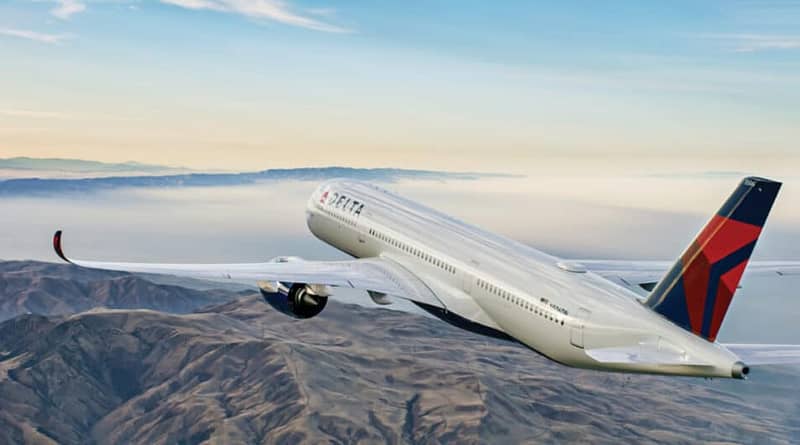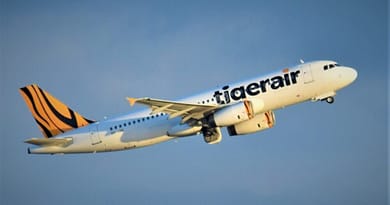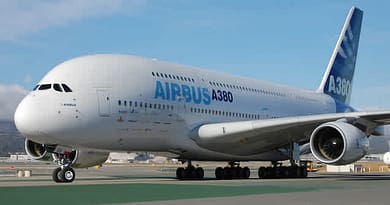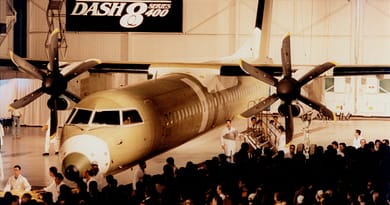How the Airbus has changed – from the A300 to A350
When the Airbus A300 hit the market back in the 1980s, it cemented the place Airbus Industrie deserved. This heralded the first competition to American airplane manufacturers. No longer were airlines forced to buy only American planes. Thus Airbus opened the door for better aircraft designs and a more competitive landscape. Flash forward forty years, how does the most recent airliner created by Airbus, the A350, compare to the original A300?
For a similar analysis on the evolution of the Boeing 777 over the years, CLICK HERE
 A Delta Air Lines Airbus A350. Photo: Delta Air Lines
A Delta Air Lines Airbus A350. Photo: Delta Air Lines
Two different eras
It goes without saying that these two aircraft were built and designed in two very different areas. Not only has technology advanced considerably, but also the way airlines use aircraft.
No longer would airlines have four-engined bemouths to fly long-distance routes, and in fact, the A350 is now today in operation on the longest route in the world (New York to Singapore with the Airbus A350-900ULR). The flight covered 9,000 nautical miles (9,537 miles) in 17 hours and 25 minutes.

Iberia used the A300 back in the 1980s. Photo: Iberia
LIKE THESE FLIGHT BAGS? To see our collection of more exclusive and curated aviation essentials, CLICK HERE
Passengers
The Airbus A300 series originally packed in 281 passengers in a single configuration with 34 inches of legroom. This design was initially for just pan-European travel and not long-haul. When airlines saw the A300 as the perfect trans-Atlantic aircraft, Airbus updated it to the A300-600R with a two-class layout. It had 247 passengers onboard, with 46 in first class and 201 in the economy class (in a 2-4-2 configuration).
Compared to this, Airbus A350 today has a capacity of 315 passengers, with 48 in business class and 267 in the economy. It could seat 440 in total if it were all economy.
Airbus A350-900ULR (ultra-long-range) sits 67 business class passengers and 94 premium economy passengers. There are no standard economy seats.
Airbus A350-1000 can seat 369 passengers, with 54 in business class and 315 in the economy. Its maximum occupancy is 480 passengers.
As we can see, the A350 series is bigger and carry more passengers than the A300. But surprisingly, Airbus has kept the two-class layout, and still has the same 2-4-2 configuration onboard.

The cabin layout of the A350-900. Photo: Air France
Range
Any era can build a big plane (look at the Boeing 747 or the planned Tu-404), but the range is where the difference in technology will showcase itself. To read our post on the Tupolev Tu-404, an aircraft design three times the size of an Airbus A380, CLICK HERE
We start with the Airbus A300:
- A300B4-200 has a range of 2,900 nautical miles (5,375 km).
- A300-600R has a range of 4,050 nautical miles (7,500 km).
Compared to the Airbus A350:.
- Airbus A350-900 has a range of 8,100 nautical miles (15,000 km).
- Airbus A350-1000 has a range of 8,700 nautical miles (16,100 km).

The range has made the aircraft very popular around the world. Photo: Airbus
The ultra-long-range A350 that Singapore Airlines operates is as under:
Airbus A350-900ULR has a range of 9,700 nautical miles (18,000 km). (That is almost three times the range of the A300)
The improvements of the A350 series over the A300 are the testimonial of the technological prowess of Airbus, and how its aircraft have changed aviation forever.
What do you think? Let us know in the comments.
Disclaimer:- Technically, the most recent aircraft to join Airbus is the Airbus A220 via Bombardier. But it is not an original design by Airbus.










Pingback: Can Passenger Aircraft Have Sunroofs? - InformedAviator
Pingback: Rain Causes an Airbus A220 Engine To Shut Down - InformedAviator
Pingback: Airbus A350 - Popular with Passengers and Airlines - InformedAviator